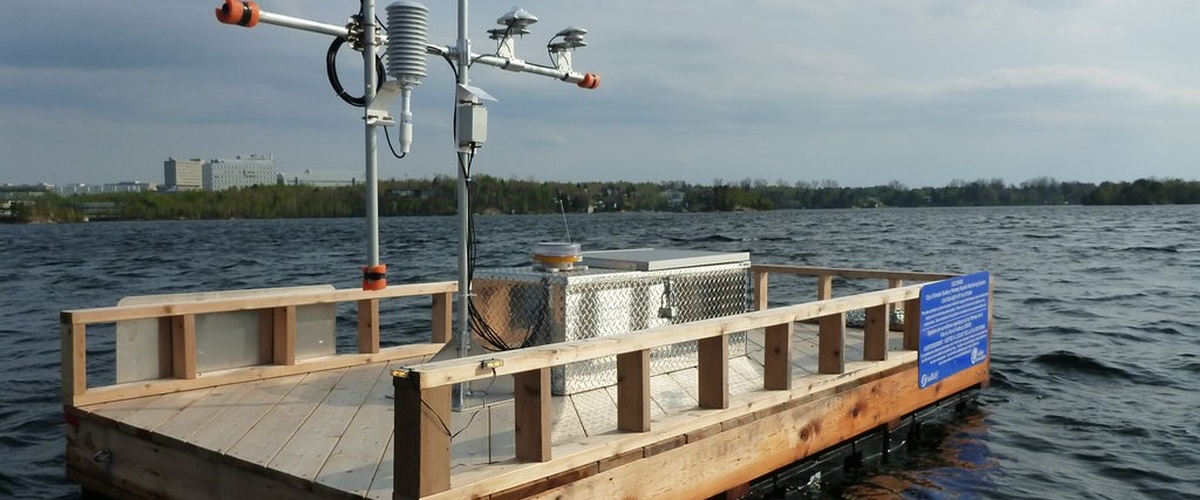Lake Water Quality Platform

The Ramsey Lake Aquatic Monitoring System (RAMS) has been removed from Ramsey Lake for the season. The City of Greater Sudbury will continue to work with community partners to monitor water quality and meteorology data in spring/summer 2018.
The Ramsey Lake Aquatic Monitoring System (RAMS) collects water quality and meteorology data and broadcasts the data to a website where it can be viewed by the public. The data collected will help investigate and gain a better understanding of algae blooms.
For example, measurements of Chlorophyll can be used as an indicator of general biomass and pollutants, like phosphorus and nitrogen, present in the lake. The measurement of Phycocanin is used to estimate the presence and relative abundance of blue-green algae.
Neither of these measurements can definitively confirm the presence of toxic algae blooms. Only laboratory analysis can determine whether or not an algae bloom is toxic. If you have concerns about an algae bloom, please contact Public Health Sudbury & Districts or the Ontario Ministry of the Environment and Climate Change.
- Measurements of FDOM (fluorescent dissolved organic matter) are used to indicate the changes or amounts of organic matter dissolved in water.
- Measurements of Conductivity are used to determine how much electrical current moves through water. These measurements can then be related to concentrations of ions in the water. Ions come from dissolved salts and inorganic materials like chlorides.
- Turbidity is a measurement of the optical clarity of water. Turbid water is less clear or coloured or murky.
- pH is a measurement of how acidic (low pH) or basic (high pH) water is. Water is considered neutral, neither acidic nor basic, at a pH of 7.
- Dissolved Oxygen is an important indicator of water quality because of its influence on the organisms living in the lake.
